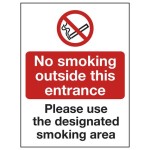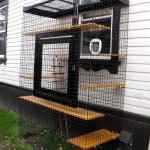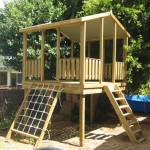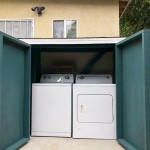Outdoor Storage for Toys: A Comprehensive Guide
Keeping outdoor toys organized and protected from the elements can be a challenge, especially for families with active children. Outdoor storage solutions tailored specifically for toys offer a convenient and durable way to maintain a tidy and accessible play space. This guide explores essential aspects to consider when choosing and using outdoor toy storage options.
1. Determine Your Storage Needs
Start by assessing the types and quantity of toys that need to be stored. Consider both regularly used toys and seasonal items to ensure there is ample space. Smaller toys can be kept in bins or baskets, while larger items such as ride-ons or playhouses may require a dedicated shed or enclosure.
2. Choose Durable Materials
Outdoor storage solutions should be able to withstand the elements, including rain, sun, and extreme temperatures. Opt for materials like weather-resistant plastic, metal with anti-rust coatings, or treated wood that can endure outdoor exposure without deteriorating.
3. Consider Ventilation and Drainage
Toys can accumulate moisture over time, leading to mildew or damage. Ensure that your storage solution has adequate ventilation to promote airflow and prevent moisture buildup. Additionally, drainage holes in the base help prevent water accumulation, especially after rain or snow.
4. Maximize Space and Accessibility
Choose storage units that make the most of available space without being bulky or cumbersome. Stackable bins, shelves with adjustable heights, and multi-level enclosures can optimize storage capacity. Consider easy-to-access features such as hinged lids, sliding drawers, or open-front designs for convenient toy retrieval.
5. Maintain and Extend Lifespan
Regular maintenance can extend the life of outdoor toy storage solutions. Clean and dry units periodically to prevent dirt accumulation and moisture buildup. Apply protective coatings or sealants to metal or wooden units as needed. Avoid overloading storage units and handle them carefully to prevent damage.
6. Enhance Organization
Use baskets, bins, or drawer dividers to keep different types of toys organized and easily identifiable. Label containers to simplify storage and make retrieval more efficient. Consider using clear containers to allow kids to see the contents and make their own selections.
7. Incorporate Safety Features
Ensure that storage units have rounded corners and smooth edges to prevent accidents. Choose units with locking mechanisms to deter unauthorized access or tampering. Sturdy construction and stable bases are essential for safe handling and storage, especially in areas with children present.
8. Match Your Outdoor Aesthetic
Consider the overall style and aesthetic of your outdoor space when selecting storage solutions. Choose colors and designs that complement your patio furniture, décor, or landscaping. Wooden or wicker units can blend seamlessly with natural surroundings, while colorful plastic bins or sheds can add a vibrant touch.
Conclusion
Outdoor storage for toys is an essential element in keeping play spaces organized and protected from the elements. By considering factors such as storage needs, materials durability, ventilation, space utilization, maintenance, organization, safety, and aesthetic appeal, you can choose and implement effective storage solutions that enhance the functionality and enjoyment of your outdoor play areas.

Outdoor Toy Storage Ideas All Moms Will Love Arinsolangeathome

Outdoor Toy Storage Ideas All Moms Will Love Arinsolangeathome

Diy Outdoor Toy Storage You Are More

Outdoor Toy Storage Ideas Busy Toddler
:max_bytes(150000):strip_icc()/momaneedsaproject-ea4fe474617a41fe9debc4f775dae5cd.jpg?strip=all)
Diy Outdoor Storage Ideas

Diy Outdoor Toy Storage You Are More

Outdoor Toy Storage Ideas All Moms Will Love Arinsolangeathome

Say Goodbye To Outdoor Toy Clutter With These Diy Storage Ideas

Iheart Organizing Garage Update Outdoor Toy Organization

Outdoor Toy Storage 5 Tips To Get Everything Organized Once And For All
Related Posts








